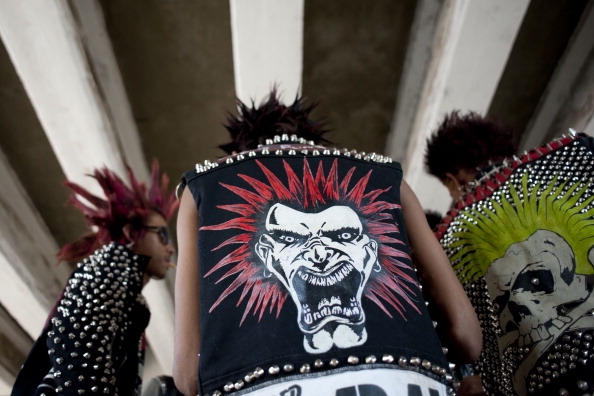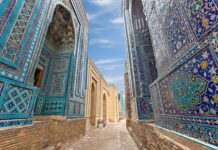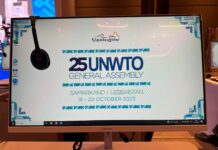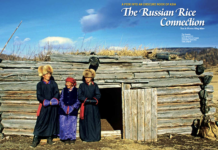
Punk is finding its voice as a powerful form of social commentary in Asia
Text Joe Henley
Punk hardly needs an introduction. Music, fashion and lifestyle converge in this unique subculture, known for its wild Mohawk hairstyles, spikes and piercings, black leather and “emo” disposition. In Asia, a continent whose many different cultures tend to share a deep-seated appreciation for cultural traditionalism, you would be forgiven for thinking that punk barely registers in the social strata in the more conservative parts of the region. But it does – and not just in terms of fashion statements – although in fashionable areas such as Taipei’s Zhongxiao-Dunhua and Tokyo’s Harajuku, you can drop several hundred dollars to get the look of strung-out Sid Vicious, even if without the Sex Pistols’ true grit. But while punk culture comprises a very small segment of the population in Asia, there are several dedicated punk scenes stepping into the spotlight.

Punk Revolution
Myanmar was run by a ruthless military junta which crushed any voices of dissent for decades. Here, punk has remained in the underground for some 20 years, but it is finally emerging. According to 36-year-old Thet Khaing – also known as “Skum” – a vocalist in Yangon’s D-beat “crust” punk band Kultureshock, and a leading figure in the Burmese punk insurgence, Myanmar’s punk scene started out as one of the city’s fashion factions before it evolved into a fully-fledged music movement. “It all started in the mid-1990s when a group of guys started to dress up like punks on festival days,” he says. “Younger kids wanted to copy their style and began the practice of going out dressed up like punks. Eventually, that fashion punk scene evolved and became the punk music scene you see nowadays.”
One of the other well-known bands in the punk new wave in Myanmar is Rebel Riot. For 29-year-old singer and guitarist Kyaw Kyaw, his idea to start a band was instigated during his country’s Saffron Revolution in the late summer and early autumn of 2007. Protests had kicked off in Yangon and spread around the country after the government removed fuel subsidies, causing the prices of petrol and natural gas to skyrocket. “After [the revolution], we believed that people have the power to oppose the military system. That’s why we became a punk band – to speak loud for justice,” says Kyaw Kyaw.
From a fashion trend to a music underground movement, Burmese punk runs deep in a country where approximately one quarter of the population still lives below the poverty line – a rate that doubles in rural areas. Rebel Riot tackles this state of affairs with the lyrics of dissent of the variety that have defined the punk genre: “No fear! No indecision!/Rage against the system of the oppressors! We are poor, hungry and have no chance/Human rights don’t apply to us/We are victims, victims, victims.” But rather than just sing about the challenges and changes of the socio-political system, Rebel Riot have been at the helm of Myanmar’s “Food Not Bombs” chapter since 2012, distributing vegetarian meals to Yangon’s needy.
In spite of their efforts to do something positive for the community, Kultureshock vocalist Khaing says that punks are still looked down on: “Still, punks are viewed as misfits and outsiders of society by the general public. In Yangon, people are getting used to seeing punks on the streets. But it’s still not socially acceptable, for punks are considered hoodlums or petty criminals by most Burmese people.”
Music with a Message
For 16 years, Riz Farooqi, frontman of longstanding Hong Kong hardcore band King Ly Chee, and a revolving cast of musicians, have been the flag bearers for the Hong Kong punk scene. King Ly Chee has toured several countries in Asia, and made it to the US in 2016 for a series of gigs with American hardcore legends Sick of It All. As a result, they’ve won themselves a worldwide following.
International success notwithstanding, Farooqi has found that promoting the music he loves in his hometown has been an uphill slog. “There are only a small handful of bands within the world of hardcore and punk rock in Hong Kong. Because there’s such a small number of groups, most of the bands are pretty friendly with each other. There seems to be some sort of kinship, somehow, in finding that little group of people who are super into this music in a city of seven million,” he says.
The small number of Hong Kongers who have embraced an interest in punk music have maintained this niche since the late 1980s, but development has been relatively non-existent, says Farooqi. “It’s just what it’s been like here for a couple of decades now,” he laments. “There has been no growth whatsoever. Any time there seems to be some sort of a breakout band, it only lasts a few months.” Nevertheless, Farooqi’s passion is still going strong, and he continues to write new music and plot new courses for his band. The Chinese government’s increased political meddling in public life has impacted the punk scene for over a decade. In 2004, King Ly Chee – a band that has never shied from expressing its dissenting views on the political system – was placed on a blacklist of bands banned from playing on the Chinese mainland.
This banishment, says Farooqi, has stopped King Ly Chee and similar bands from being able to take their music from a part-time passion to a full-time vocation. “In China, the money is all in the festivals. Bands can make a living from just doing the festival circuit because so many companies are dumping tonnes of money into those things. Since we’re almost never allowed to play in those festivals, we don’t get access to any of that cash which could go into further developing the band,” he says.
An important part of keeping punk alive in Asia is passing on its message of perseverance. Farooqi, father to a young daughter, hopes that the lessons he learned through punk might be imparted to her: “I have no idea if my daughter will go the same route in playing music. But if she does – regardless of what music she plays – I hope she understands that being actively involved in something means going out and making things happen yourself. More so, the lesson is about respecting people from different backgrounds.”

The Homegrown House
Another Southeast Asian stronghold of punk is located in the Muslim state of Malaysia. Since 2010, Rumah Api – which translates to “House of Fire” – a Kuala Lumpur punk space owned and operated by 37-year-old Man Beranak, has become the primary live venue for the local punk, metal, and hardcore music scene. Beranak has organised countless shows for both local and overseas bands. The former banker’s journey into the punk labyrinth began at 13, when a friend made him a mix tape, not long after the Malaysian punk scene started out with bands like Carburetor Dung in the late 1980s and early 1990s. Beranak later mustered up the courage to leave banking and dedicate his life to creating a space for punk music.
“I took much influence from 924 Gilman in the United States, Ungdomshuset in Copenhagen, and Köpi in Berlin,” he says of his sources of inspiration. Beranak says he has been committed to creating a space for punk that is opposed to any form of discrimination or violence in Malaysia. However, this has not stopped attacks on Rumah Api. “We have been attacked by the cops two times, from Malay Power three or four times, and from the city council too many times,” Beranak recalls.
Malaysia’s extreme “Malay Power” group is an organisation similar in outlook to the neo-Nazi “white power” movements, complete with its own bands, brands and boots-and-braces sporting skinheads who aren’t opposed to using violence and fear as an intimidation tool to target groups whom they feel are straying too far from so-called traditional Malay values. They actively campaign for the implementation of far-right nationalism that eliminates non-ethnic Malays and curbs immigration. This group identifies themselves as part of the punk scene in Malaysia. Malay Power band Boot Axe’s leader, “Mr Slay”, told Vice that “all Malaysian neo-Nazis listen to punk and skinhead music” and that the anti-Nazi punks in Malaysia would “dare not openly oppose us. They are afraid to speak out.”
Beranak stands in firm opposition to the association between punk and such brands of racism, however, seeing it as damaging to his efforts at destigmatising punk. Despite continued threats of attacks from these different fronts, Rumah Api’s doors remain defiantly open in the spirit of spreading the punk ethos of non-conformity and non-violence.
What punk has embodied, perhaps more than any other music form, is a freedom of expression, in cultures where dissent is often not welcome. Beneath this subculture’s opposition to the mainstream is a quiet power in the form of social commentary that is becoming increasingly relevant as it emerges from the underground, and finds a voice.
For more stories and photographs from this issue, see Asian Geographic Issue 124, 2017










